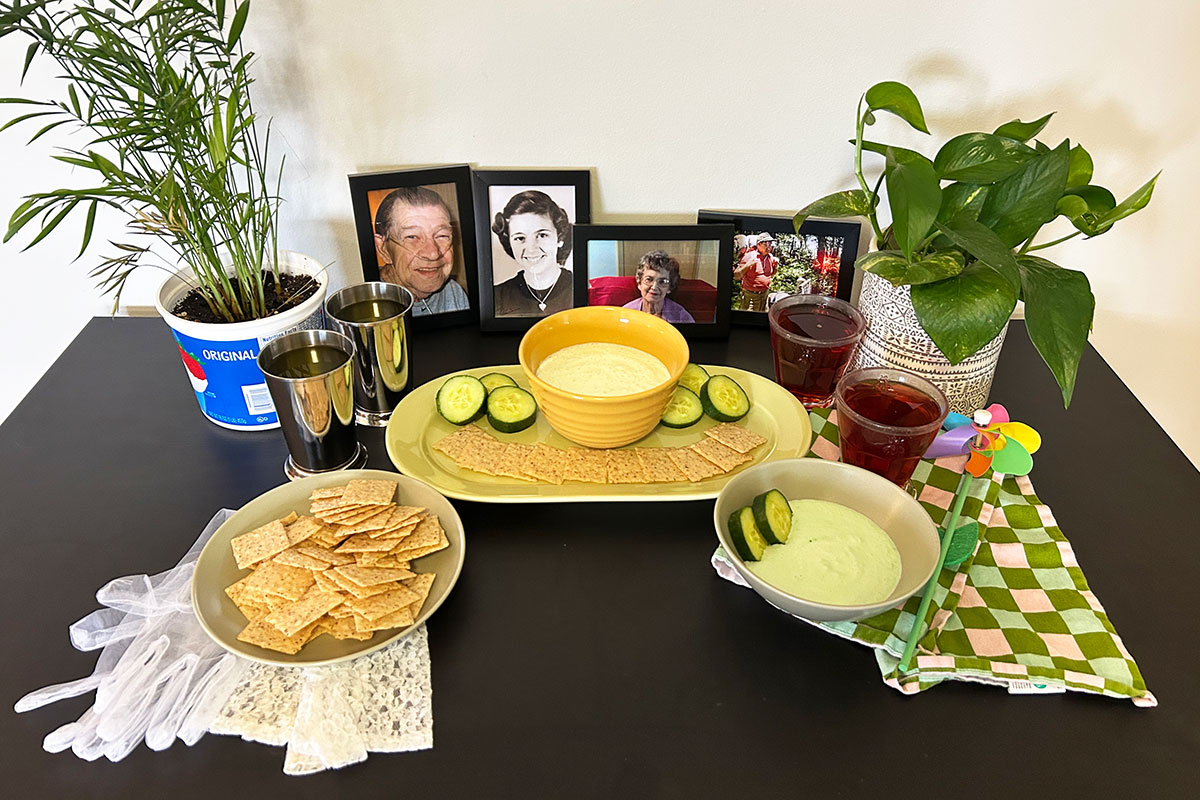Eleven is my lucky number.
I was born in Louisville, home to Churchill Downs—the racetrack that hosts the annual Kentucky Derby, the two most stressful minutes in horse racing. On the first Saturday in May, jockeys mount horses that have been flown in from around the world to race for the Garland of Roses. When I was born, I was due on June 11, my parents’ eleventh wedding anniversary. Two months prior, my parents placed a bet on the eleventh horse. It was a filly—a rare female horse to compete in the Derby—and she won.
To this day, I bet on the eleventh horse, in hopes that one day it will be my lucky number again. Nothing more than a dollar placed by a family member in Louisville, but just enough to participate in the fun. Although my family moved away to a Chicago suburb when I was five years old, celebrating the Kentucky Derby with pecan pie, funny fascinators, oversized hats, and a meal spent around the television never went away. It was one way that my family remained tethered to my Old Kentucky Home.
Today, I live right outside of Washington, D.C., but I still tune in every year with the hopes that we will see another Triple Crown winner, referring to a horse that wins the Derby, the Preakness, and Belmont Stakes. And every time I tune in, I watch the race through my fingers, petrified of a horse falling on the muddy track or colliding with another colt or gelding on the track. I’ve watched horror movies less suspenseful than some of the races, especially if it’s raining.


Despite the danger for horses and jockeys, people have kept coming back to Churchill Downs since 1875. The Derby brings together all walks of life—where people in the infield rub elbows with people sitting in Millionaires’ Row placing their bets. At home, my family tunes in to sing along to “My Old Kentucky Home, Good-Night!” and gawk at the amazingly outlandish hats. The commercials are always the same: usually one highlighting Kentucky tourism, another Maker’s Mark bourbon, and another replaying “My Old Kentucky Home” to advertise a watch.
It’s a ritual we do every year to remember home and remain connected to its sights, smells, and tastes. Alongside pecan pie and mint juleps, no Louisville Derby party would be complete without Benedictine, a cucumber, cream-cheese spread that is rarely known or made outside of the ’Ville. During the first harvest, cucumbers are abundant and cheap, making Benedictine an affordable delicacy to serve on crackers and bacon sandwiches. Chef Kenneth Hardiman even added it to the official Kentucky Derby menu in 2022.
The spread—originally made with cucumber and onion juice—was created by caterer Jennie Carter Benedict at the start of the twentieth century. Benedict was born in Louisville in 1860, her talent for cooking nurtured by her grandmother. According to the Filson Historical Society, she began with a small kitchen in her father’s backyard, selling school lunches out of a red pull-cart on Third Street, alongside John Booker, a worker in Benedict’s home. By 1900, she opened her own store, Jennie C. Benedict and Company, with a lunchroom, candy department, and a soda fountain modeled after Mammoth Cave—the longest cave system in the world in south-central Kentucky.
Most people believe that the spread comes from Benedict’s last name and her eponymous restaurant and tearoom based out of a five-story building she purchased in 1908. Although her cookbook, The Blue Ribbon Cook Book, published in 1902, didn’t include the recipe for her spread, later editions did, including one released in 2022.
True to Benedict and Benedict’s, my family’s version of Benedictine features pulverized cucumbers, onions, cream cheese, and sometimes sprigs of dill for decoration. It spreads well on finger sandwiches, crackers, and even your finger if you’re trying to “test” it before the party gets started. It’s best to make it the day before and let the flavors mix in the refrigerator overnight, then serve it cold the next day. It’s a refreshing dip or sandwich spread for any springtime gathering, especially as soon as cucumbers come into season. One of my family’s favorite versions is to use it like a mayonnaise spread on a bacon sandwich, once we start eating meat again after Easter Sunday.
If you’re like me, eleven Benedictine-covered crackers may just be your good luck charm! And even if your horse doesn’t win, you will still be lucky to spend time with loved ones chowing down on bacon and Benedictine sandwiches, conjuring the hot Louisville spring.

Benedictine Spread
Ingredients
2 large pickling or English cucumbers
1, 8-ounce package of cream cheese, softened
2 tablespoons onion, finely chopped
1/4 teaspoon salt
Dash of pepper
Sprigs of dill for garnish
Drops of green food coloring, if desired
Preparation
Take approximately 2 large cucumbers, peel them, slice them in half, and remove the seeds. If you want a striking green color, leave a little bit of the cucumber skin on (it also adds a little texture), or you can use green food coloring, although that looks more artificial.
Place the cucumbers in a food processor and pulse until finely chopped. Drain well through a strainer. You may have to squeeze it a bit. You need a total of 1/2 of a cup of cucumber pulp.
Add softened cream cheese. Take onion and place in a food processor and pulse until finely chopped or even pureed. Add 2 tablespoons of onion puree to the cream cheese mixture along with remaining ingredients. Mix with a hand mixer until smooth.
Serve cold, spread on crackers, pretzels, or a sandwich. If it’s served in a bowl as a dip, add a couple sprigs of fresh dill on top.
Emma Cieslik is a museum professional and religious scholar in the Washington, D.C., area and a former curatorial intern at the Center for Folklife and Cultural Heritage.


